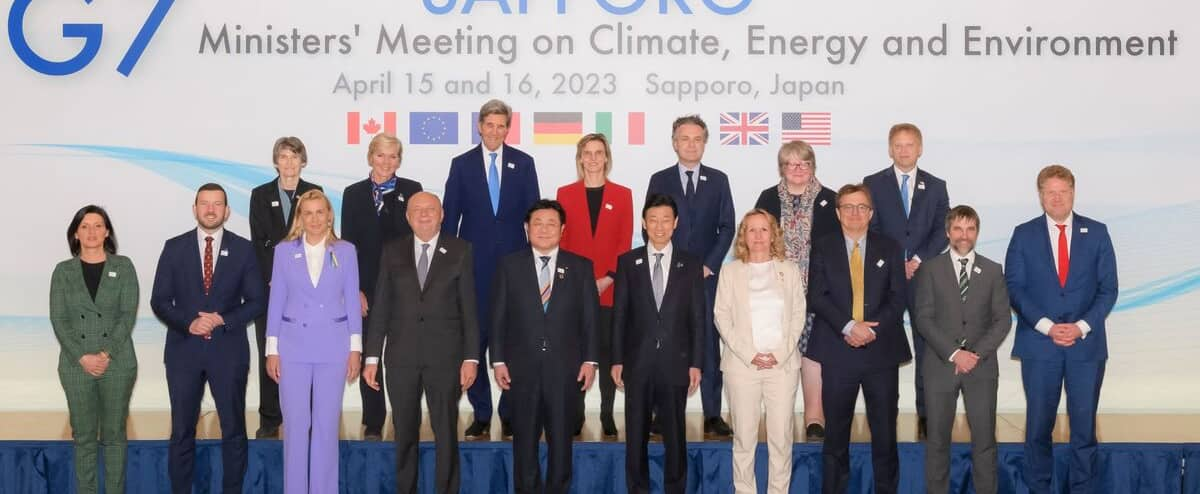The G7 Energy, Climate and Environment Ministers met on Saturday in Sapporo (northern Japan) for final negotiations scheduled until Sunday, at the end of which their announcements in the face of the emergency climate will be particularly scrutinized.
• Read also: Population record: immigration at the origin of the increase in the population in Canada
The club of the main industrialized countries is under pressure to show unity and strengthen its action after the last alarming summary report of the intergovernmental group on climate change (IPCC), published in March.
According to the IPCC, global warming caused by human activity will reach 1.5°C compared to the pre-industrial era from the years 2030-2035.
However, the Paris climate agreement of 2015, which all the members of the G7 say they want to defend relentlessly, aims precisely to limit the increase in temperatures to this level, or failing that, to well below 2°C.
The G7 must also set the tone against global warming before the important deadlines later this year, such as the G20 in India and the United Nations climate conference COP28 in Dubai, which President Ahmed al-Jaber announced. trip to Sapporo.
“There is significant progress” in the joint G7 communiqué being finalized, and this sends a “positive message”, assured journalists on Saturday before the French Minister for Energy Transition, Agnès Pannier-Runacher.
“For the first time, the G7 is saying that we must accelerate the exit from all fossil fuels” when they are not accompanied by devices for capturing and storing their CO2 emissions, she underlined. “This is major progress and we would like this language to be taken up at the G20 and then by COP28,” she added.
Many NGOs feared that this ministerial meeting of the G7 would ratify a regression on the climate front, due in particular to the conservative positions of Japan.
Tokyo was keen to call for new upstream gas investments amid the war-induced energy crisis in Ukraine, and to gain G7 recognition of its controversial strategy to use hydrogen and carbon dioxide. ammonia as co-fuels for its gas and coal-fired power plants.
“It is necessary to work towards the common goal of carbon neutrality by having varied approaches according to the circumstances of each country”, further justified on Saturday the Japanese Minister of Economy, Trade and Industry ( Meti) Yasutoshi Nishimura.
Japan, however, did not really win the case. “We have found a reasonable compromise” by insisting on the “short-term” dimension of the gas supply imperatives, explained Ms. Pannier-Runacher.
A provisional version of the final press release, of which AFP has obtained a copy, in fact recommends restricting investment in this sector and prioritizing the “transition to clean energy through energy conservation and the reduction of gas demand.
Japan’s other proposal to have ammonia and hydrogen recognized as “clean” co-fuels for thermal power plants was also surrounded by safeguards. These technologies must be developed from “low carbon and renewable” sources, prefers to underline the latest version of the G7 text consulted by AFP.
“Given the low expectations (on the Sapporo meeting, editor’s note), the result today seems better than many expected,” commented Ed King, of the GSCC climate communication network.
The G7 countries will also reaffirm their commitment from last year to totally or mostly decarbonize their electricity sectors by 2035, according to the draft version of their joint statement.
They want to prioritize accelerating their exit from coal in this area and are calling on other countries to follow suit, a message that seems to be implicitly aimed at China in particular.
But the members of the G7 failed to reach an agreement on an exit date from coal in their own electricity generation, while the United Kingdom, supported by France, had proposed the deadline of 2030.
Speaking of a ‘critical decade’ for the climate, the G7 will call for a 60% reduction in global greenhouse gas emissions by 2035 compared to their 2019 levels, in line with IPCC recommendations .
